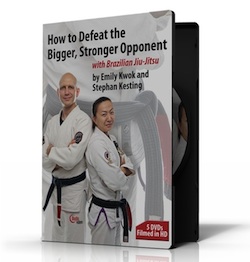"Combinations" - a word bandied around like so many others in our vocabulary everyday, but certainly worthy of a deeper consideration of thought martial artist and / or combat. Without preamble - I would like to offer my thoughts on a simple formula on which all combinations (in my opinion) should be based. It is not the question of whether we apply this formula for a stand-up or a scenario land / scenario taken, the truth of it remains constant.
First, the combination should not be developed or any notion of what looks or feels "good". The case in point: I visited a school earlier this year - and watched the tail of a ranking in which a group of people were tested for their 2nd degree black belts. The part of the consideration that I have seen have seen their work "before kick combinations."
I could hardly believe what I was watching! There they were; whip combo after combo - and it goes like this: Front Kick, left hook, right cross - or Front Kick, uppercut, elbow - or worse, Front Kick, chef-but, right cross . No doubt, they looked quite sharp, crisp, snappy and that everyone - but the only thing everyone has failed to make it seems, is just apply a bit of thought about the feasibility of these combo.
Indeed, even someone who has just thumped in four or five good kicks before the duration of their training you - if you land that good conduct before the fact, the adversary is generally pushed violently backwards and well beyond the reach of all the good - intended or uppercut to the head, but follow-up. What looks good or feels good is not necessarily the same thing as' what works well. "
In other words, the formula goes like this: move a job, any initiative, and work. Once you've done it, apply it in sparring / catch / fighting whatsoever, notes the effect it has on the opponent or how the opponent reacts to it - then ask yourself the question Basic: How can we take advantage of this effect or reaction. This will give us our "monitoring" move. Now put them together, and work a little more - and a few others - etc.
In my school, we call it "Plan B". During a year, provided that you are training diligently, it is easy to "plan B" four or five movements. Please understand, our first technique, our 'A' move, is still what we are trying to make full effect, and then we give to our 'Plan B' move if necessary - we are not 'false' with our first shot - we give it everything!
Rigan Machado told me once, during the late eighties, "Jiu Jitsu is very simple. You just try a move, any move and see what the opponent does. Then, develop your next removal on the basis of his reaction. It Jiu Jitsu! "
This sage counsel Rigan May seem more simplified, but it will remain the heart of any true art of combat; Jiu Jitsu, wrestling, boxing, fencing, judo, etc. If you're in the trenches "and get all sweaty and Then you will know the truth of the foregoing, even if only with one or two movements. Plan B, like many techniques you can - but where to start. My advice, start with these techniques do you use most, those whom you know best. You've probably already an idea of how people react when you try to move l ', or perhaps more point, what people are preventing the passage of work - if you know that, then you're ready to start making your plan B technique.
In most cases - at least in Jiu Jitsu - A plan for the masses is not suspected of anything - Plan B is necessary to deal with those who have been subjected to a Plan times too many, and are now dealing effectively. Look closely enough, think hard enough, and you arrive at the perfect follow-up - and you're in business once more!
The good thing about ground - is that you can develop an understanding of the reaction of opponents of a movement, in a relatively short period of time, compared to a stand-up. This is largely because, generally there is a very limited (often only one or sometimes two) the number of reactions that people have soil, and it becomes relatively easy to catalogue these conditions. Also, you can work in your field full bore on a much more regularly than you can in your stand-up "and you can do with little or no damage.
That means you can "play the scenario" number of times, with the full intention, even a single training session - difficult to do with a top-right, left hook combo - at least not without losing friends and take great pains. Thus, the carpet provides a very conducive environment for the development of combinations possible. Nevertheless, keep the formula in mind - and run it past one of your favorite moves that you do not have off-fire as single shots! Enjoy work - both physical and mental
Home » Review Technique » Brazilian Jiu-Jitsu Bandung : "How to build effective combinations"
Brazilian Jiu-Jitsu Bandung : "How to build effective combinations"
12:48 AM
Unknown
Label:
bandung,
brazilian jiu-jitsu,
English,
english version,
martial arts,
Review Technique

